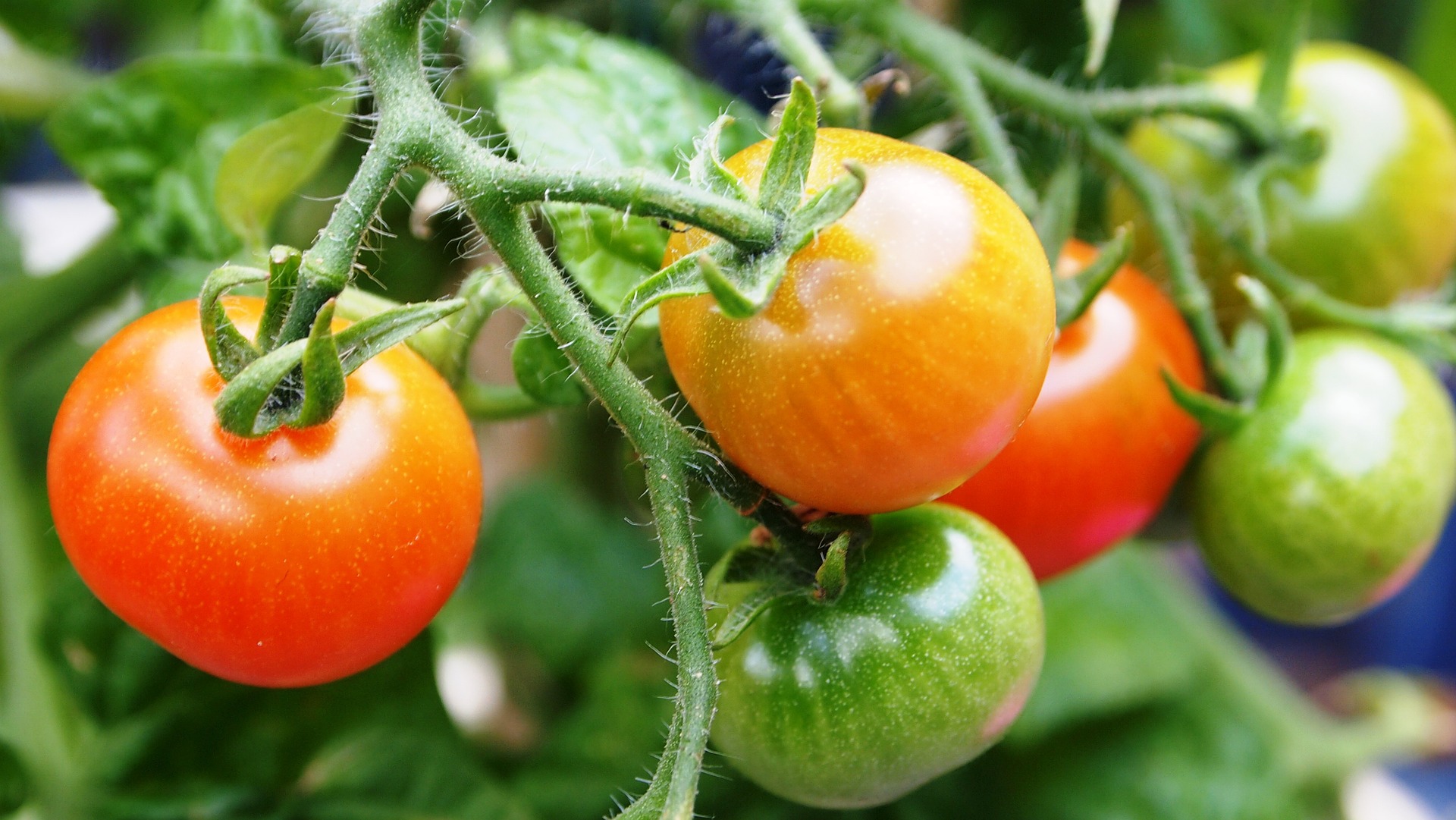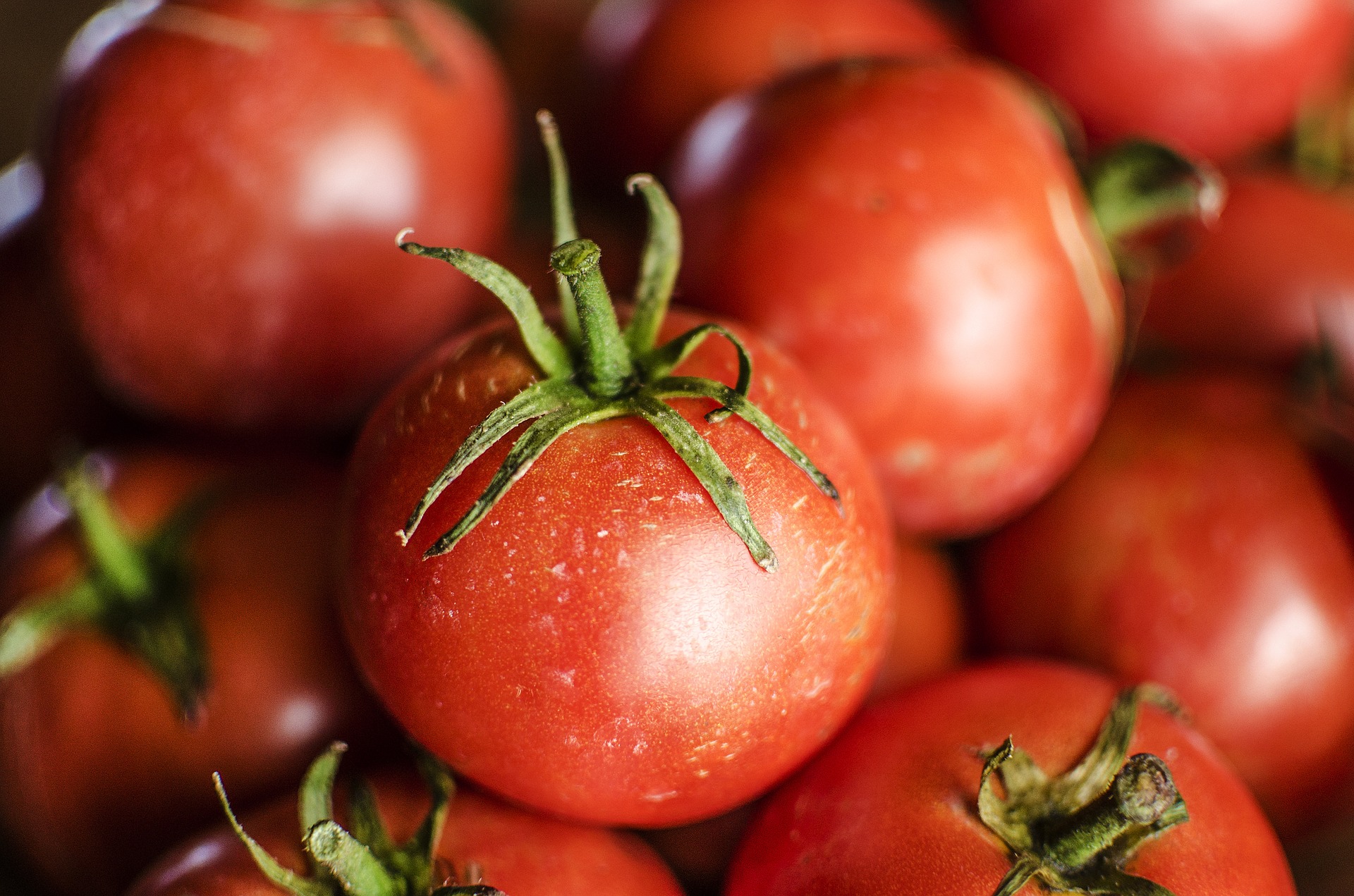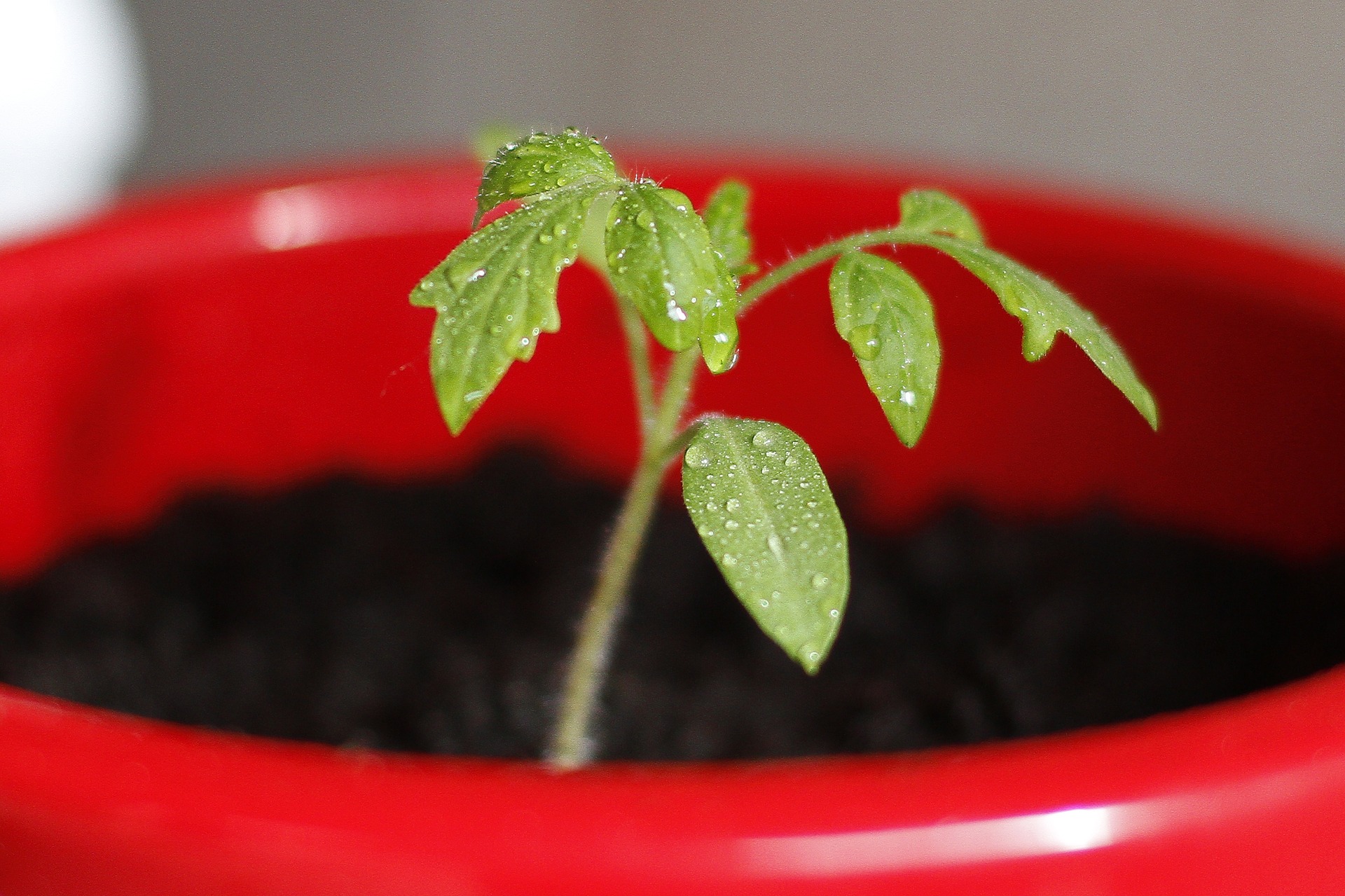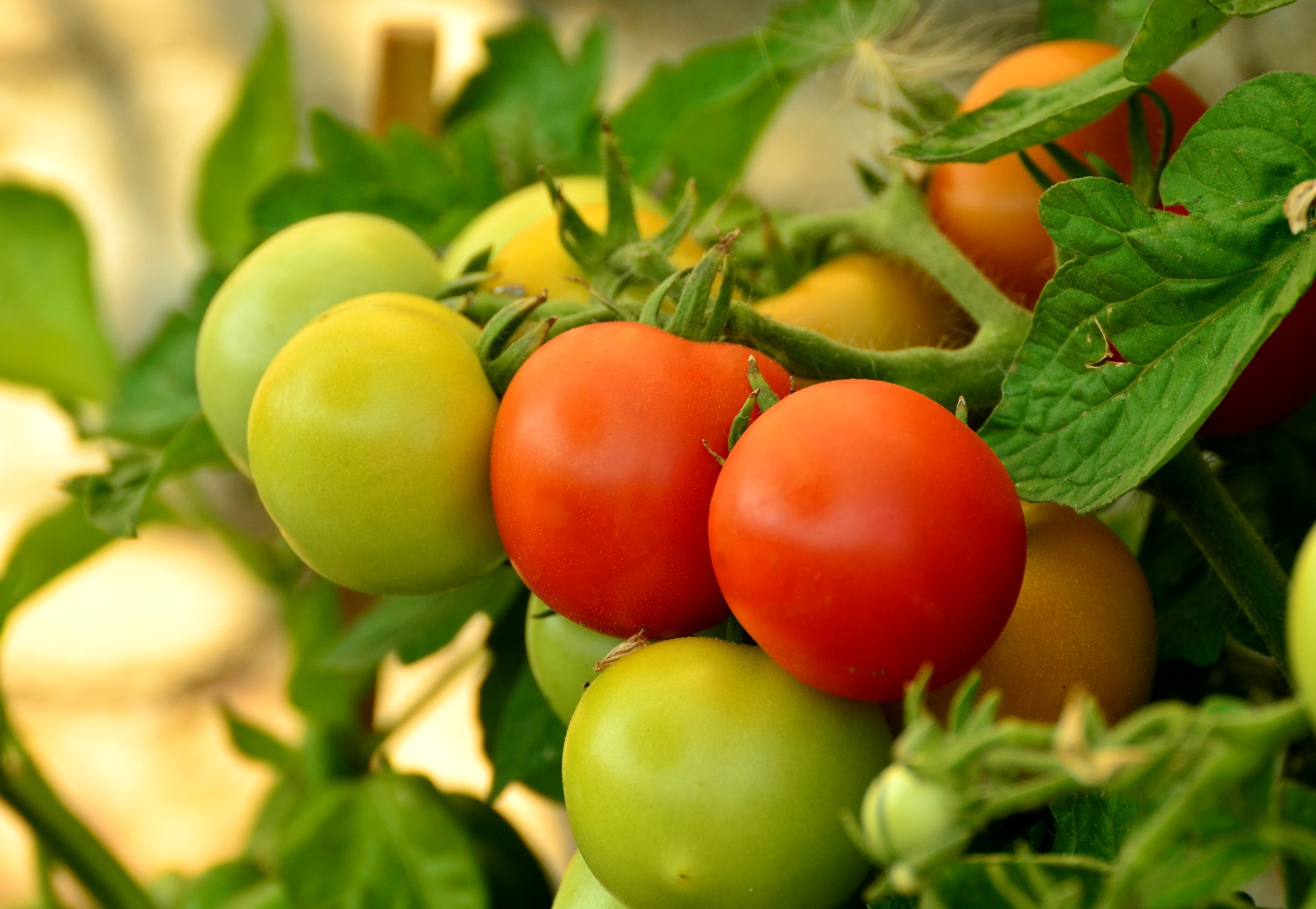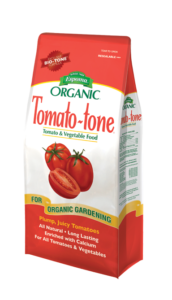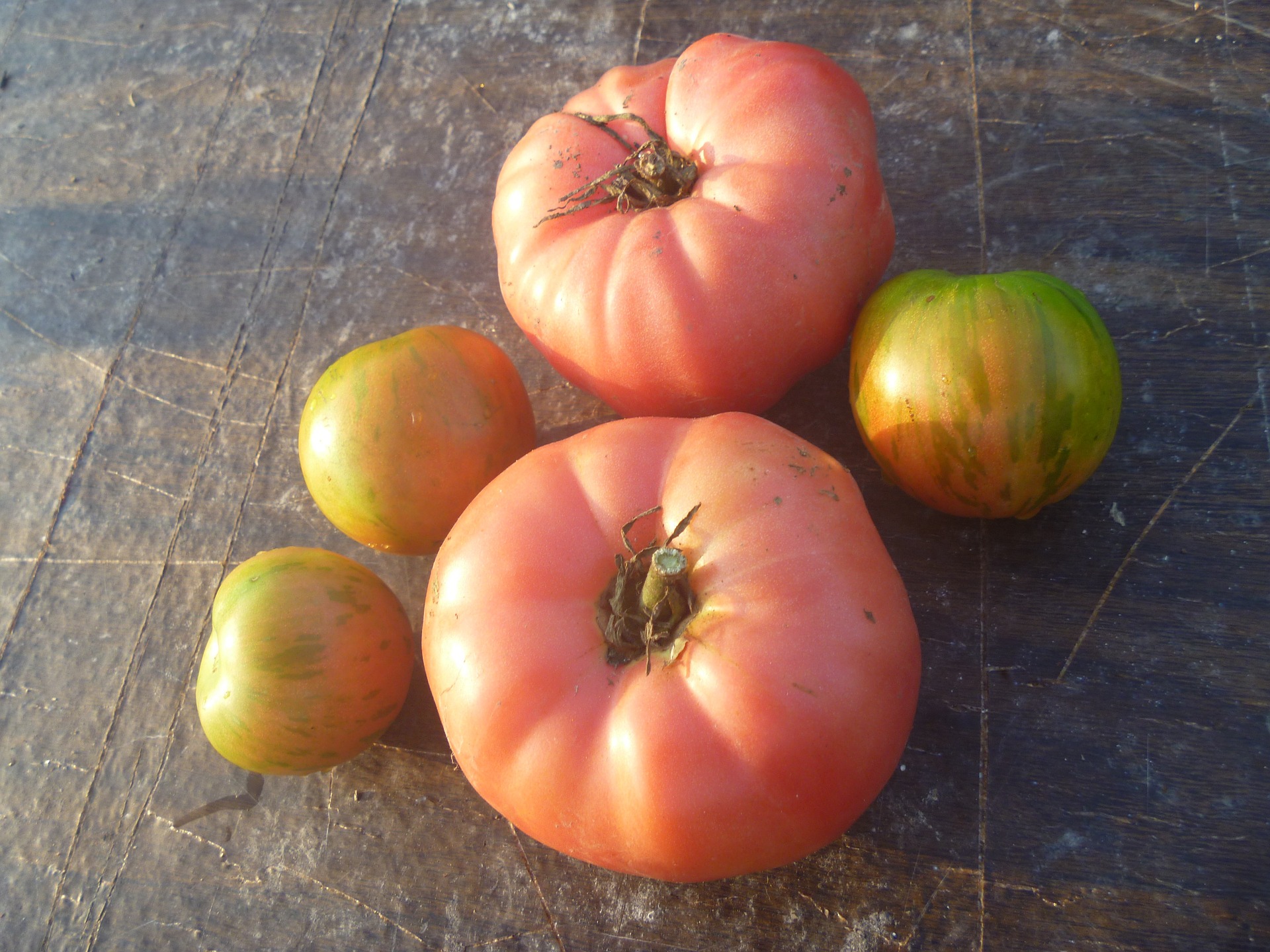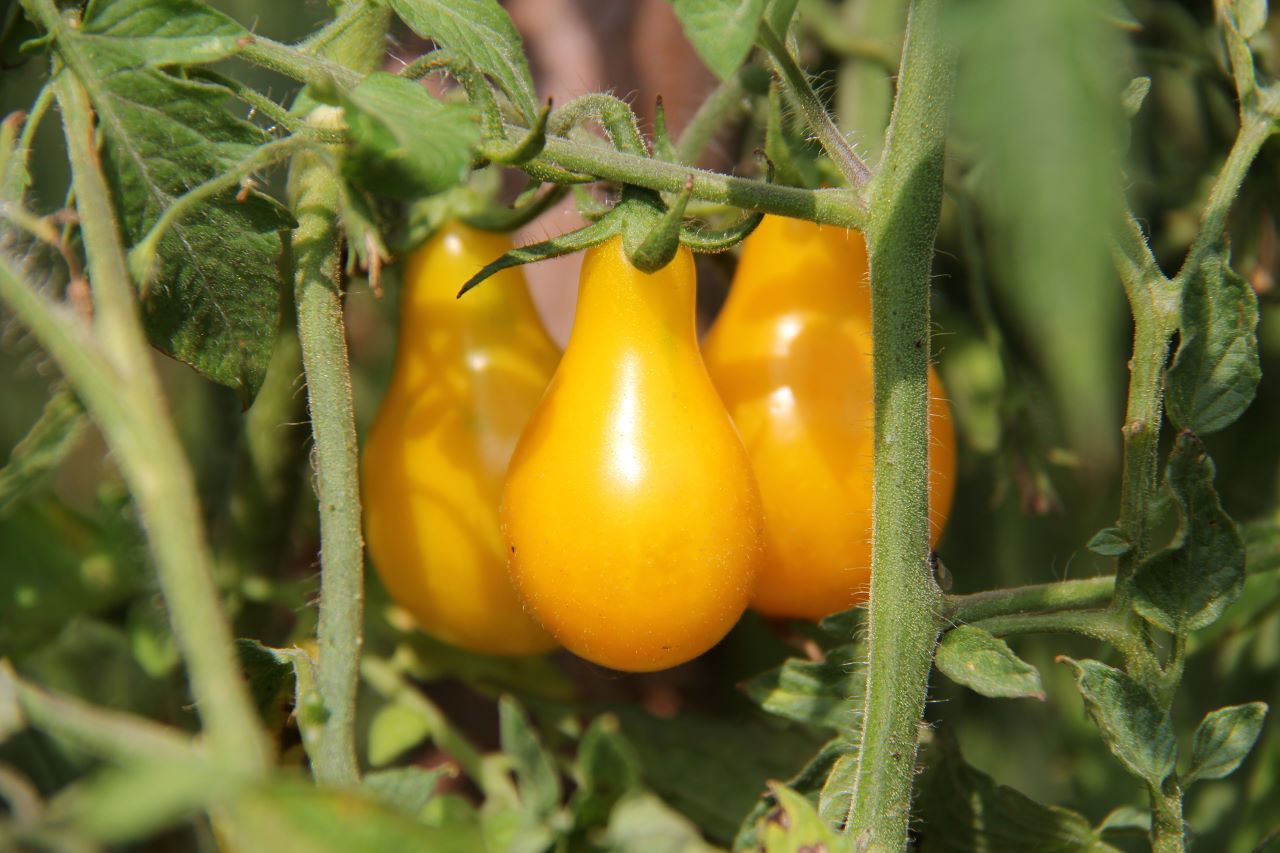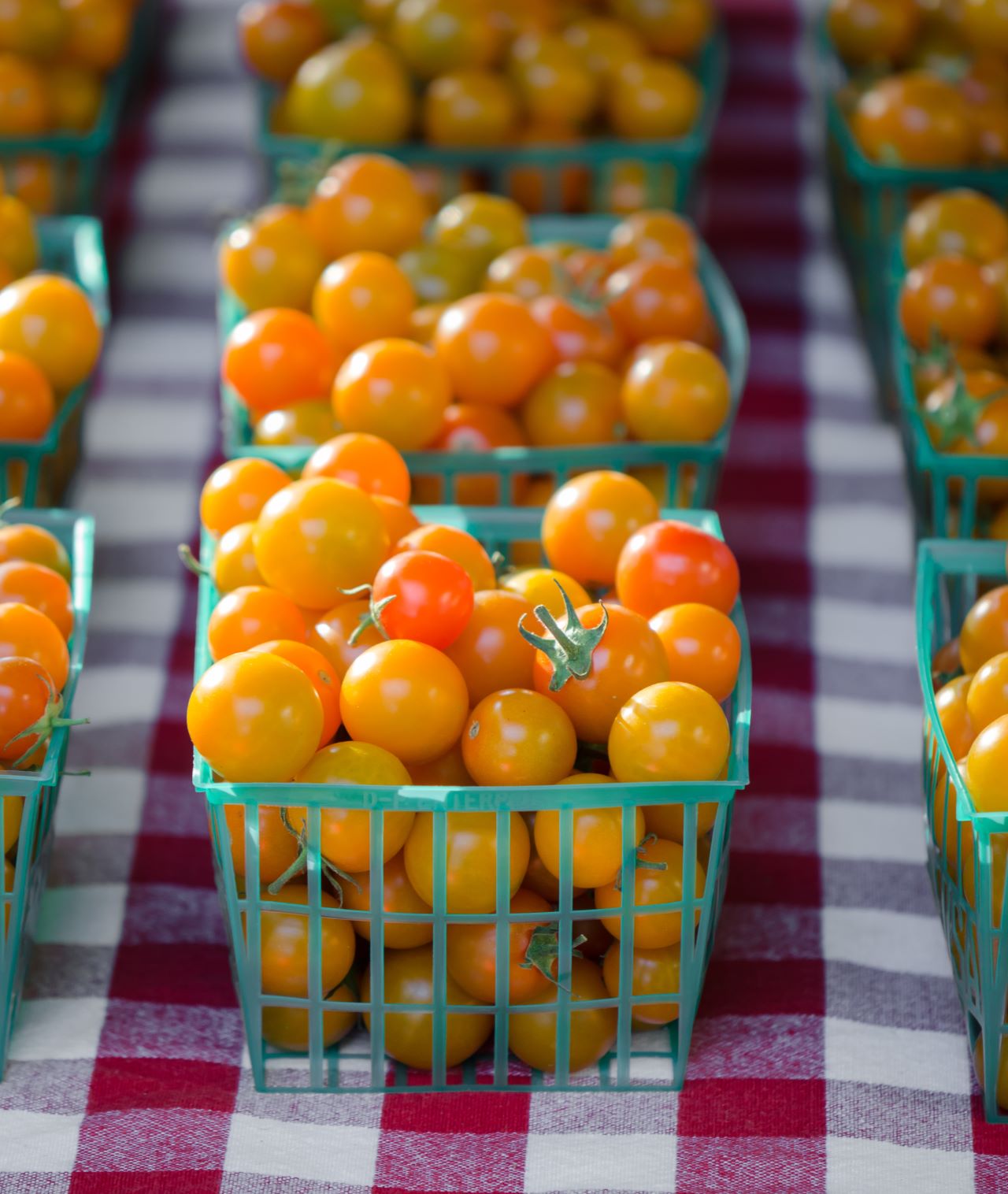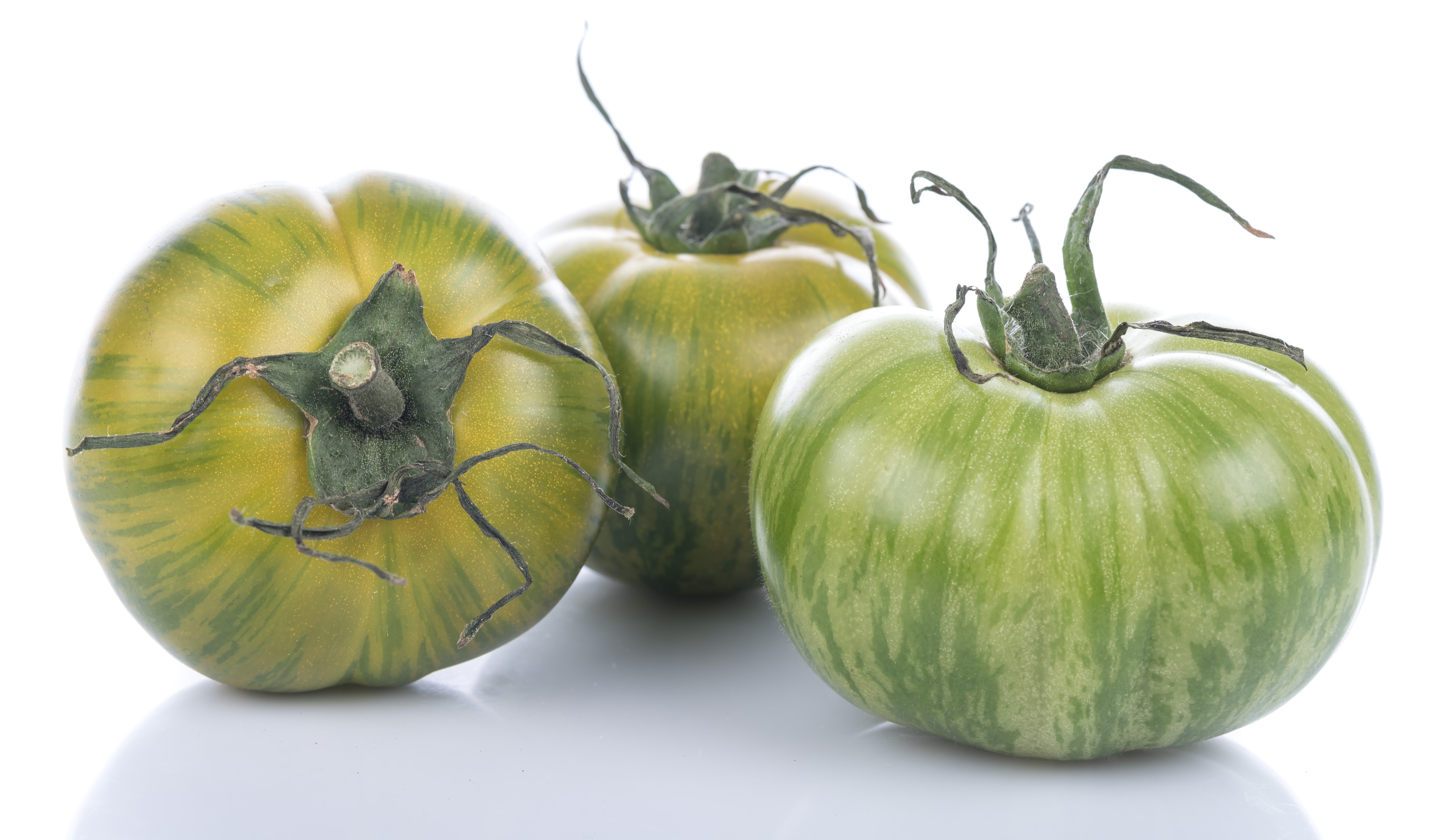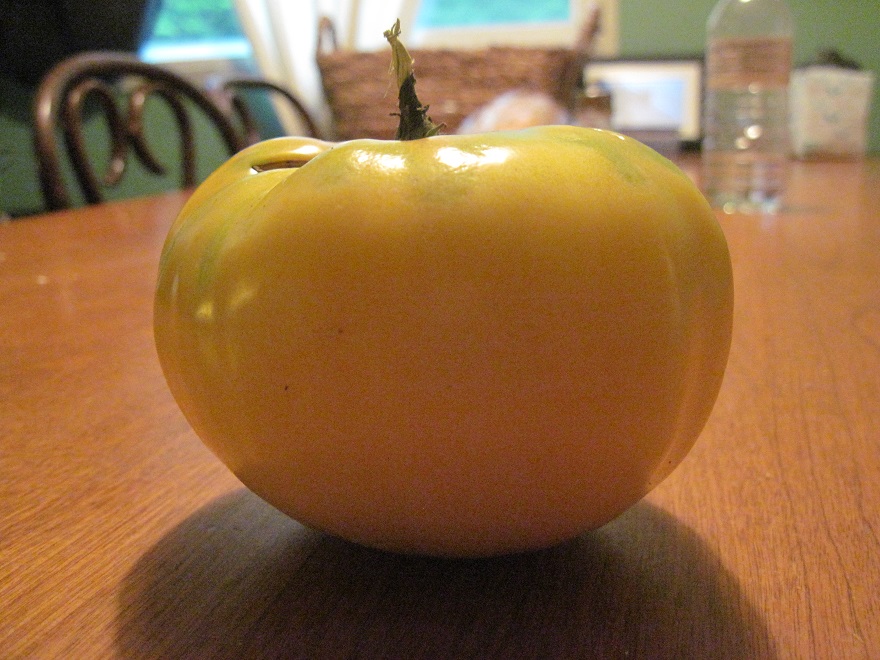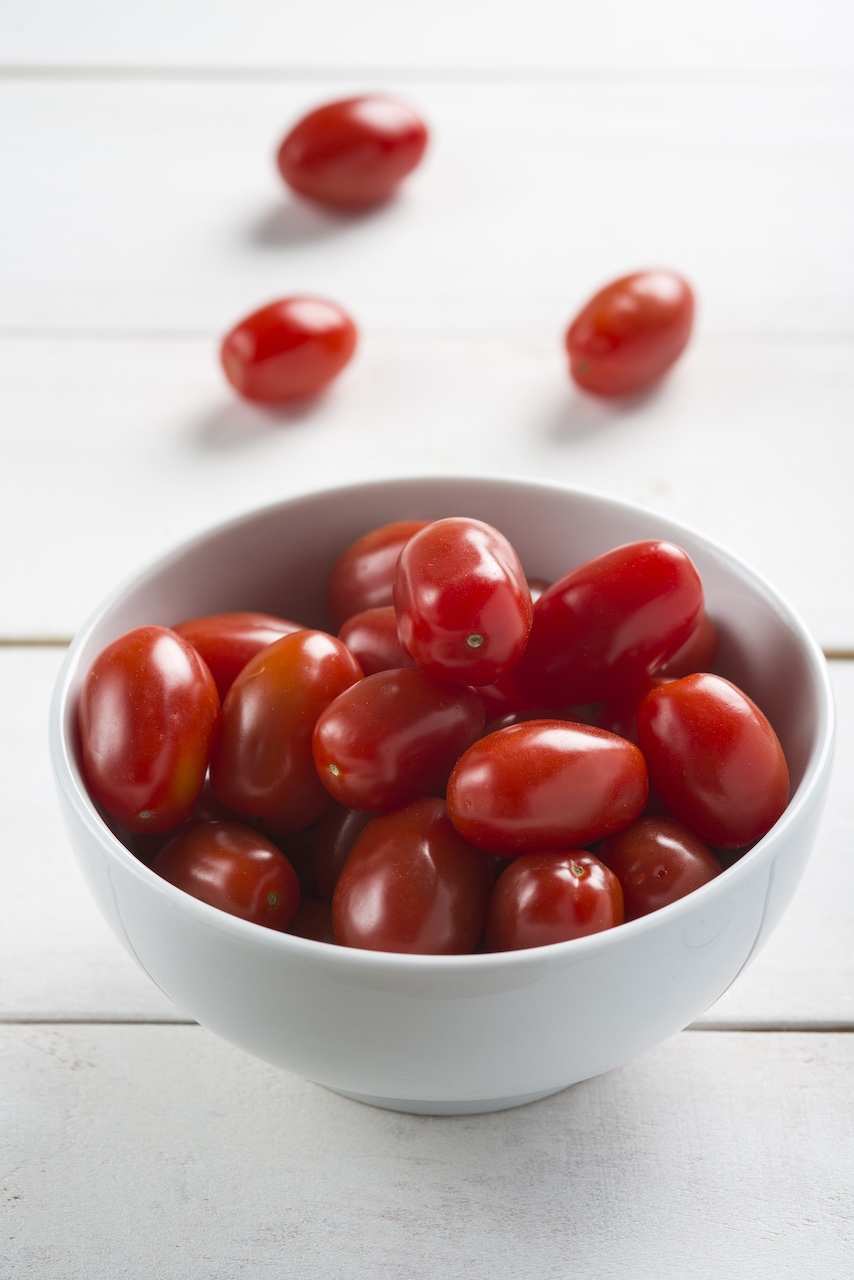Simple Steps to Planting Tomatoes
Seeing red tomatoes peek through the green leaves in your garden is a true sign that summer is here. The first harvest of the season provides opportunities to finally try those delicious garden-to-table recipes.
Tomatoes are a staple in every organic garden. And growing them doesn’t have to be difficult.
Start planting today and you’ll have a delicious harvest in no time.
Start Growing
1. Choose a few of your favorite tomato varieties and get ready to plant!
2. Choose a spot that gets at least 6 hours of sunlight a day.
3. Check the plant tag to see how far apart plants should be.
4. Dig holes larger than the tomatoes’ original container.
5. Set the plant in the hole so its lowest leaves are below the soil level. Go ahead and pinch those lower leaves off now.
6. Mix in an organic starter plant food, such as Bio-tone Starter Plus, to keep roots strong.
7. Fill the hole with amended soil or Espoma’s Organic Garden Soil.
8. Once established, feed tomatoes by mixing in 3 tablespoons of Espoma’s Tomato-tone per plants. Organic Tomato-tone provides tomatoes the nutrients they need to grow big and plump. Since this is a slow-release, organic fertilizer, Tomato-tone never forces rapid growth, which reduces tomato yield.
Keys to Success
Stake tomatoes now to increase air circulation and sunlight exposure.
Support plants with a tomato cage, trellis or container. Stakes work, too. Hammer 6-8” stakes into the ground 3-6” away from the plant. When tomatoes begin blooming, tie them to the stake.
Water tomatoes generously for the first few days after planting. Then, give tomatoes 2” of water at their roots per week.
Feed tomatoes with organic Tomato-tone monthly for larger, plumper tomatoes all season.
Add 2-3” of mulch in 3-5 weeks to reduce water consumption.
If you’re looking for more info on tomatoes, such as growing heirloom tomatoes, hybrid tomatoes or non-red tomatoes, please visit our Organic Tomato Gardening Guide:

